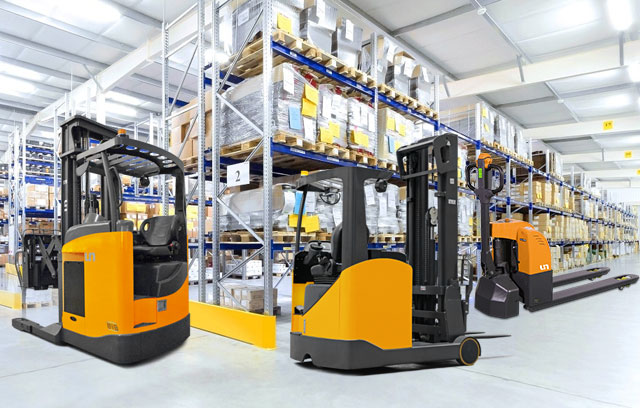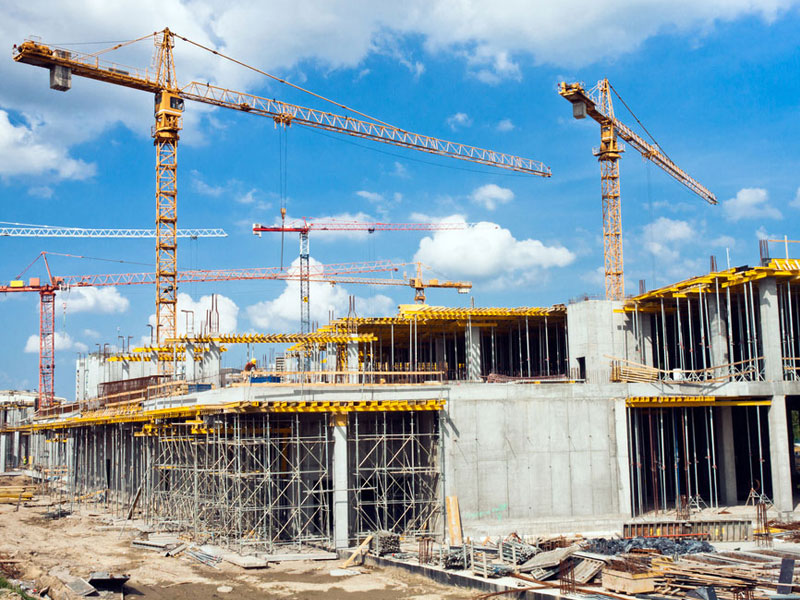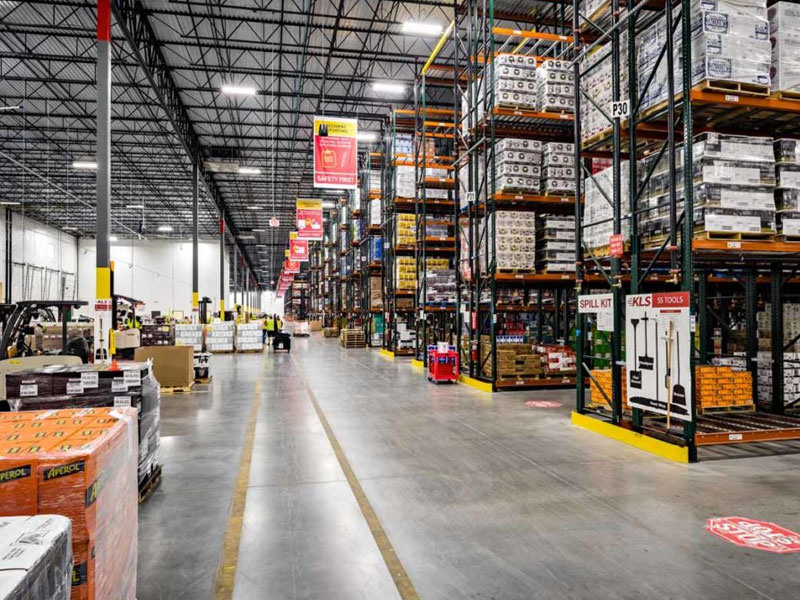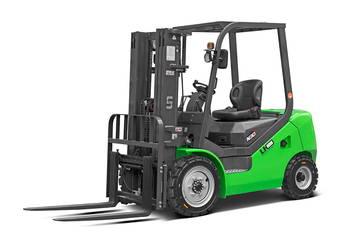1. Basic safety design
The design of an electric forklift is an important part of ensuring operational safety. To reduce the risk to operators, modern electric forklifts are usually equipped with multiple safety design elements.
* Anti-rollover system
The anti-rollover system of an electric forklift can effectively prevent the forklift from rolling over when carrying heavy objects or turning too quickly. Through the stability control device and load sensor, the forklift can promptly sense whether its load exceeds the safety range and take appropriate measures to prevent rollover.
* High stability structure
The frame of modern electric forklifts is usually made of high-strength steel, which can ensure that the structure remains stable during long-term use, thereby enhancing the overall stability of the vehicle. At the same time, the center of gravity position of the forklift is accurately calculated to avoid instability when the forklift is carrying large goods.
2. Operator training
The operator's safety awareness and operating skills are directly related to the safety of the electric forklift. When using electric forklifts, companies must provide systematic training for operators to ensure that they can use the equipment correctly and safely.
*Operation training
Qualified operator training includes familiarity with the various functions of electric forklifts, understanding their working principles, mastering safe operation skills and emergency handling capabilities. The training content should cover basic operating procedures such as lifting, lowering, and handling, and also teach operators how to deal with possible emergencies, such as equipment failure and cargo falling.
*Safety awareness education
Operator safety awareness education is equally important. The importance of safety regulations should be emphasized during the training process, and operators should be reminded to pay attention to potential dangers in the working environment, such as the cleanliness of the driving road and the management of battery power, so as to prevent accidents caused by improper operation.
3. Auxiliary safety functions
In order to further ensure the operational safety of electric forklifts, many forklift manufacturers have added auxiliary safety functions to their products.
*Automatic braking system
Electric forklifts are usually equipped with automatic braking systems, which can automatically activate the brakes to prevent accidental sliding or collision of the equipment without timely operation. This has a good preventive effect on possible misoperation or fatigue operation of the operator.
*Overload alarm system
Overload is one of the main causes of electric forklift accidents. Most modern electric forklifts are equipped with an overload alarm system. When the load of the forklift exceeds the safety limit, the system will send a warning signal to remind the operator to reduce the burden, thereby avoiding structural damage or operational hazards caused by overloading.
* Anti-skid control system
Many electric forklifts are equipped with an anti-skid control system, which can effectively prevent the wheels from slipping on slippery ground. Especially when working in cold storage, wet warehouses or rainy days, the anti-skid system can ensure the stability of the forklift and prevent sliding accidents.
4. Regular inspection and maintenance
In order to ensure that the electric forklift can still maintain an efficient and safe working state during long-term use, regular inspection and maintenance are links that cannot be ignored.
* Battery inspection
Electric forklifts use batteries as a power source, so the health of the battery directly affects the safety of the equipment. Operators should regularly check the battery charging status and external contact points to ensure that there is no leakage, corrosion, etc. At the same time, the battery should be replaced or repaired regularly to avoid interruptions or dangers in operation due to battery aging.
* Mechanical component inspection
The mechanical components of the forklift, such as the hydraulic system, steering system, brake system, etc., also need to be inspected regularly. During the inspection, we should focus on the oil level and quality of the hydraulic oil, whether the brake system is sensitive, etc. If any abnormality is found, it should be repaired or replaced in time to avoid equipment failure.
* Safety device inspection
The safety devices of electric forklifts, such as alarm systems, automatic brake systems, sensors, etc., also need to be checked and calibrated regularly. Ensure that all safety functions are in normal working condition to deal with possible safety hazards.
5. Adaptive working environment
The working environment of electric forklifts has an important impact on operational safety. Ensuring that the forklift operates in an adaptive environment can effectively reduce the incidence of accidents.
* Clean working environment
It is very important to keep the working environment clean. The driving path of the electric forklift should be kept unobstructed, avoiding the stacking of debris or slippery roads, which can reduce the chance of the forklift losing control or colliding.
* Signs and warnings
In the working area of the warehouse or factory, obvious driving path signs should be set up, and necessary warning signs should be provided for the forklift operator. Use safety warning lights, sound signals and other equipment to remind other staff of the existence of the forklift to avoid collisions with other equipment or personnel.
*Temperature adaptability
The performance of electric forklifts may be affected in high or low temperature environments. Therefore, the forklift should be adapted to the ambient temperature during operation. For example, when working in extremely cold environments, use batteries and lubricants with low temperature performance to ensure that the performance of the forklift is not affected.
6. Emergency handling measures
Even if all precautions are taken, electric forklifts may face various emergencies in actual work. Therefore, operators should have certain emergency handling capabilities.
*Emergency stop
In the event of abnormal operation or danger, the operator should be able to quickly press the emergency stop button to cut off the power supply to prevent the accident from expanding. At the same time, electric forklifts should also be equipped with obvious and easy-to-operate emergency stop devices to facilitate operators to respond quickly in critical situations.
*Emergency evacuation passages
In emergency situations such as fire and electrical failure, the area where the forklift is used should be equipped with obvious emergency evacuation passages to ensure that the operator can evacuate quickly and safely.











 中文简体
中文简体 عربى
عربى Español
Español














